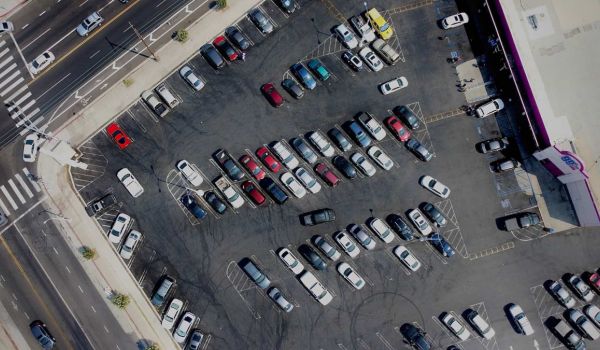As the 2013 Feeding Cities conference unfolds this week in Philadelphia, Next City, a media partner for the event, will feature regular updates from bloggers covering its talks and workshops. Click here to see a rundown of our coverage.
From idyllic aquaponics projects in Berlin, to a garbage dump in Zimbabwe, to a beak trimmed chicken in Pennsylvania, the Feeding Cities photo exhibition illustrated the long, diverse and at times contentious pathways food travels to nourish city dwellers.
Some of the photos transported viewers out of the city, to sprawling agricultural fields and fledgling irrigation projects under huge skies. Others were direct, like Cristina Hutchinson’s close-up of potatoes and beets at a Chester County, Pa. farmers market.
Some exposed forgotten parts of the food system. Laurel Redding’s “Chips and Feed” showed a textured close-up of cast-off junk food — specifically, Chex Mix and Cheez Doodles — which are fed to dairy and beef cattle. And some of the photos referred to, rather than depicted, the way food functions in the modern world. A photo by Mara Gordon showed a McDonald’s sign in Egypt. With no food in the picture, the ubiquitous brand in an unlikely location spoke volumes about the globalization of American food habits.
Many of the photos added an illustrative visual component to discussions going on at the conference. Catherine Brinkley was recognized for her contribution of “Beak Trimmed Chicken,” the above portrait of a hen. Brinkley said she often photographs animals because she is interested in presenting them to “urbanites who have no interaction with these animals, so they can gain a sense of what these animals are like. “
The photograph is intense: The chicken’s beady eye stares at the viewer from behind the blurred, but obvious, edges of a cage. The hen’s beak is abruptly chopped, in a sharp way that could shock the uninitiated viewer. “If you like to eat chicken, then you should maybe come to terms with the fact that this is how they’re raised,” Brinkley said.
Brinkly is not a vegetarian and emphasized, “I don’t want to paint big ag as evil,” but said she buys most of her meat at the farmers market because “the welfare of the animal matters for me.” Working on a double degree at Penn in urban planning and veterinary medicine, she said the question of animals in cities will become ever more pressing, both in U.S. cities — which are already experiencing an increase in small-scale animal agriculture products, like honey bees and egg-laying hens — and internationally, as meat consumption rises at astronomical rates.
Jacob Rivkin’s award-winning, painterly depictions of food containers were more abstract. He had two pieces in the exhibit: One showed cans covered in stretched plastic (it was a stockpile in a Philadelphia warehouse), while another showed piles of berry baskets at an organic farm in Media, Pa. “Seeing the ways a local farm has an organizing system, and the way mass-produced goods are organized, helps me understand the larger system that we occupy,” he said.
The contrast between his two images fed into the larger commentary put forth in the exhibit. The food that we see in our urban lives is often miles and months away from its production space, and often unseen. If we are going to change food systems, or if the broader public will be moved to try to change them, then we first must see these systems as they are.
The exhibit is open to the public at the Morgan Fine Arts Building at the University of Pennsylvania until March 21.

Allyn Gaestel is currently a Philadelphia Fellow for Next City. Much of her work centers on human rights, inequality and gender. She has worked in Haiti, India, Nepal, Mali, Senegal, Democratic Republic of Congo and the Bahamas for outlets including the Philadelphia Inquirer, the Los Angeles Times, Reuters, CNN and Al Jazeera. She tweets @allyngaestel.
















